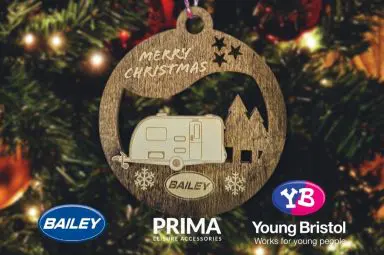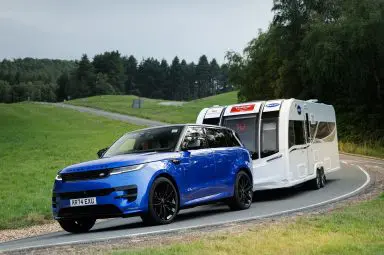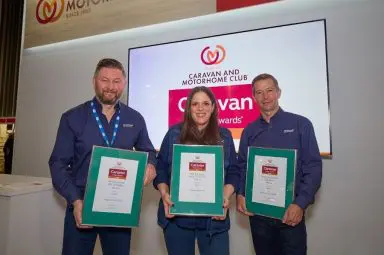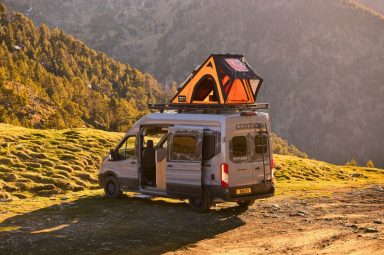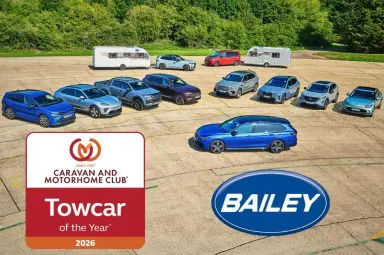Towing Tips From a Towcar Judge

The week before my very first Towcar of the Year, I’d been on a family caravanning trip through France, Germany, and the Ardennes. I was struck by how closely Millbrook’s demanding test routes mirrored what we’d just faced on tour: long motorway stretches, steep gradients, twisting country lanes and sudden stops. It’s a reminder that the course really does reflect the challenges caravaners meet abroad and at home, making it the perfect test of both car and caravan.
So what have I learned during this time?

Real-world challenges and how to deal with them
That European trip highlighted just how varied towing conditions can be, and why a correctly-loaded caravan is key to an enjoyable holiday.
- French autoroutes and German autobahn sections demanded stability at speed, with crosswinds and slip roads testing both car and caravan.
- The Ardennes included steep climbs, tight bends, and twisting descents – precisely the kind of conditions that reveal how well a car-and-caravan combination handles braking, power delivery, and weight distribution.
- Even everyday moments, such as pulling into motorway service stations or reversing onto a pitch at night, mirror the challenges we replicate at Millbrook.
That trip underlined why Towcar of the Year is such a valuable test. It’s not just an exercise on a proving ground – it’s a condensed version of everything caravanners experience on real roads across the UK and Europe.

Understanding weight distribution
One of the biggest questions beginners ask is: How do I load a caravan correctly?
- Keep heavy items low down and close to the axle.
- Avoid placing heavy objects at either end of the caravan.
- Use a nose weight gauge to check downward pressure on the tow ball. This should be 5% to 7% of the caravan’s MTPLM.
At Towcar, AL-KO technicians carefully check caravan weights and loads before any testing begins, ensuring every rig is set up safely and consistently. That accuracy is something every caravanner should mirror before a trip, as it’s the foundation of safe towing.
Bailey has produced detailed guides that show how to load and set the nose weight of your caravan.
Matching the car and caravan
Another common concern is whether a car is suitable for a particular caravan. Have you heard of the 85% guideline that both UK clubs – The Caravan and Motorhome Club and The Camping and Caravanning Club – indicate as a healthy car/caravan weight ratio?
In a nutshell, the caravan’s MTPLM should be less than or equal to 85% of the car’s kerb weight. While this remains a solid guideline for newcomers, caravanners can legally tow up to the maximum towing limit imposed by the car manufacturer.
At the awards, the Caravan and Motorhome Club’s technical team matches each car with the most suitable caravan based on weight and towing capacity. This ensures the tests reflect realistic, road-legal combinations.
This is also where Bailey’s lightweight design comes into play. Thanks to Alu-Tech construction, Bailey caravans often offer more interior space without tipping the scales too heavily, making them easier to match with a broader range of tow cars.
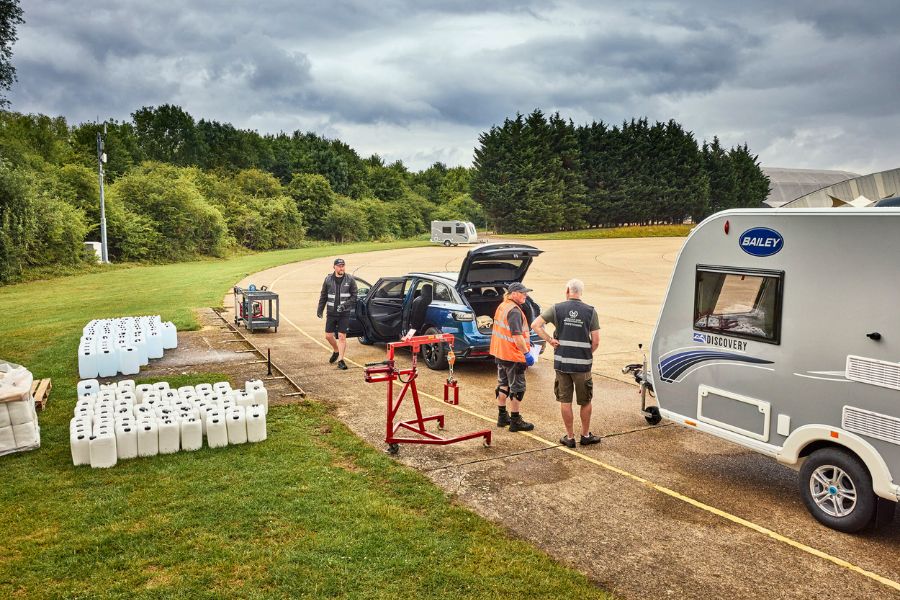
Why Alu-Tech helps on the road
While most people think of Alu-Tech in terms of insulation and durability, it also plays a role in towing safety. The rigid, fully bonded bodyshell minimises flex, which helps the caravan stay composed on rough roads and in crosswinds. Combined with Grade III insulation, it also means you can travel in confidence all year round.
Stability matters
At Millbrook, stability is tested at speed on the high-speed bowl. For caravanners, the same applies to real roads:
- Stick to the speed limits. The speed limit is 50mph on single carriageways (where the National speed limit applies) and 60mph on dual carriageways and motorways.
- Leave extra room for braking.
- Check tyre pressures before every trip and, ideally, replace tyres after 5 years.
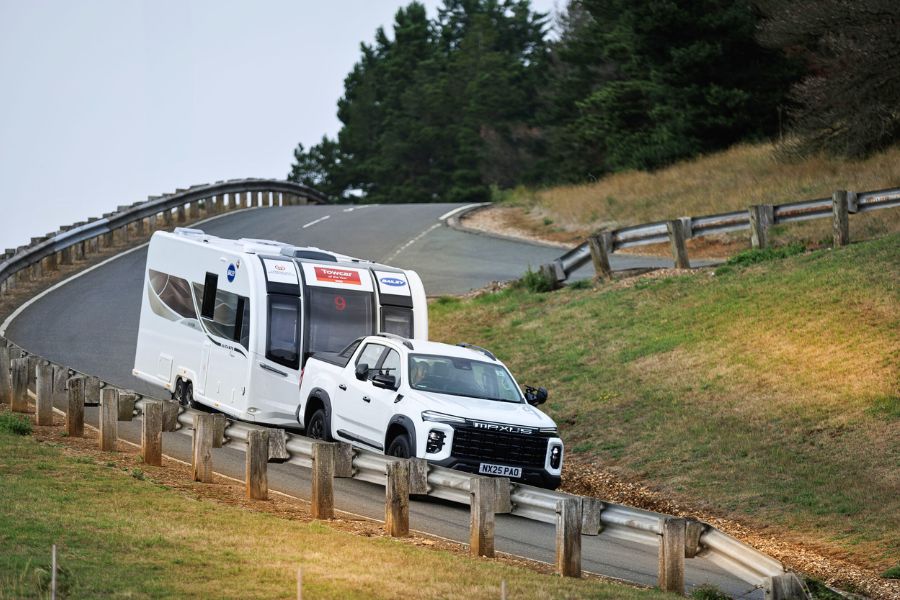
Caravan reversing tips
Reversing is where confidence is often won or lost. At Towcar, I assess how easily each car and caravan handles a reversing course, including tight corners and accurate positioning.
Here are my top reversing tips:
- Start with space: If possible, pull forward to give yourself room to manoeuvre.
- Use small steering inputs: Caravans can react quickly. Small movements of the wheel are better than big turns.
- Think opposite: To reverse the caravan in a particular direction, hold the bottom of the steering wheel and turn the bottom of the wheel towards the direction you’d like the caravan to go.
- Use your mirrors: Adjust them wide enough to see down both sides of the caravan. Can you see the rear awning rails in your towing mirrors? If so, all’s good.
- Take it slow: When it comes to reversing, slow and steady often wins the race.
- Don’t be afraid to stop and straighten: Pull forward to realign if needed – everyone does it!
How to practise reversing on site
Reversing confidence comes with practice, and the best place to start is in a safe, open area:
- Find a quiet area on a Sunday morning and set up some cones or markers.
- Practise straight reversing, then progress to gentle curves.
- Move on to pitch-style manoeuvres, such as reversing into a bay between markers.
- If you’re touring as a couple, use a spotter with clear hand signals or two-way radios.
The more time you spend practising, the less daunting it becomes on site. It’s a skill that pays dividends every single trip.
Bailey has also produced a practical guide with tips for reversing your caravan.
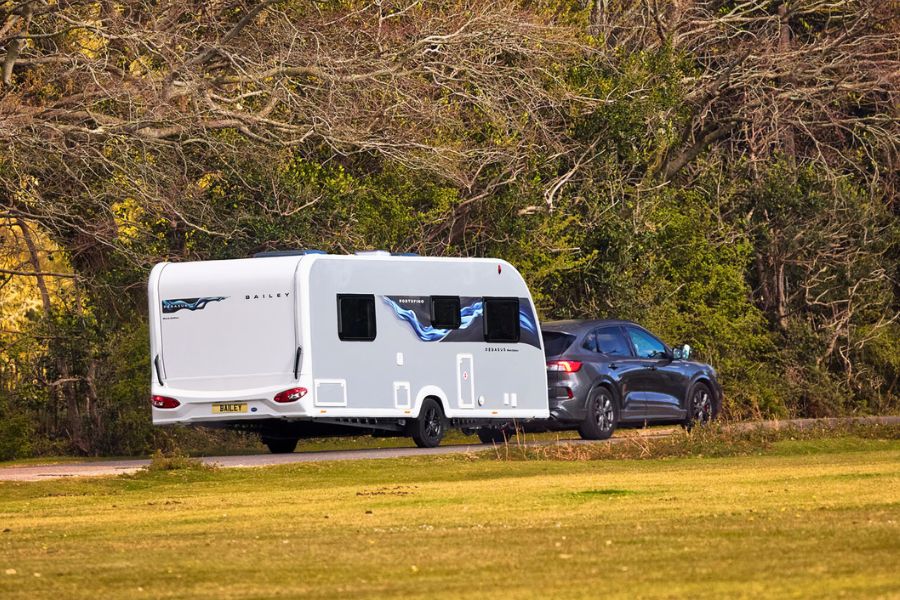
Common beginner questions answered:
Do I need towing mirrors?
The view dictates the need to fit towing mirrors. You must be able to see 4 metres out from each side of the caravan/trailer, at a distance of 20 metres behind the driver. The mirrors should allow you to see down both sides of the trailer and see behind at that distance.
Can I tow with an electric car?
Many new EVs are approved for towing, and we’ve tested them at Towcar. Bailey has produced a guide to the best EV tow cars for 2026.
What licence do I need? Since 2021, drivers with a ‘B’ licence category have been automatically granted BE status, which no longer limits caravanners to a maximum combined weight (car and caravan) of 3500kg. Checking this BE category is easy and can be carried out online at the GOV.UK website.
If you need more information, Bailey has produced a complete beginner’s guide section, which details each step of your caravanning journey.
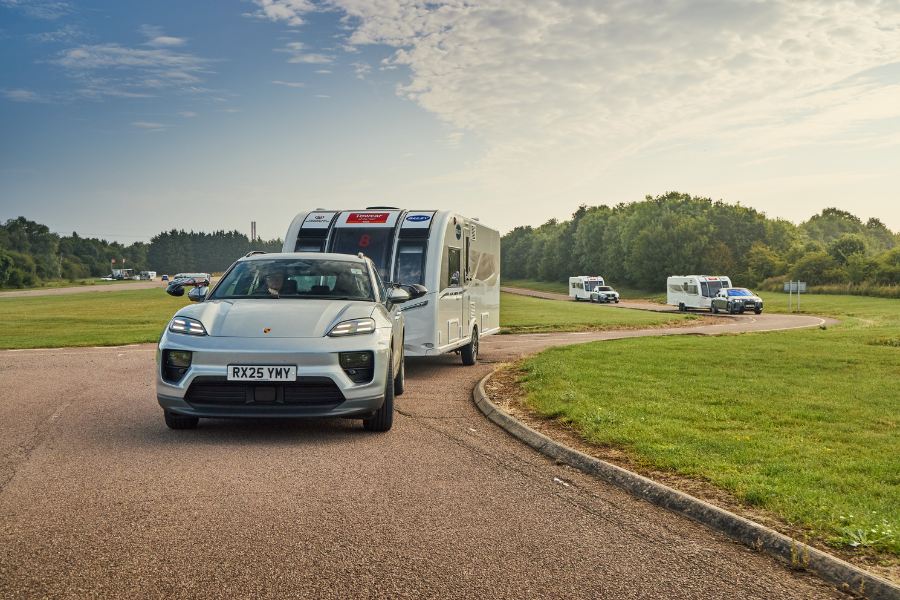
Summary
Towing doesn’t have to be daunting. With the right tow car match, good loading practice, and a caravan built with stability in mind, you’ll be well on your way to stress-free adventures.
Having judged tow cars at Millbrook – including the reversing test – I can say with confidence that Bailey caravans make the experience safer, more stable, and far more enjoyable.
